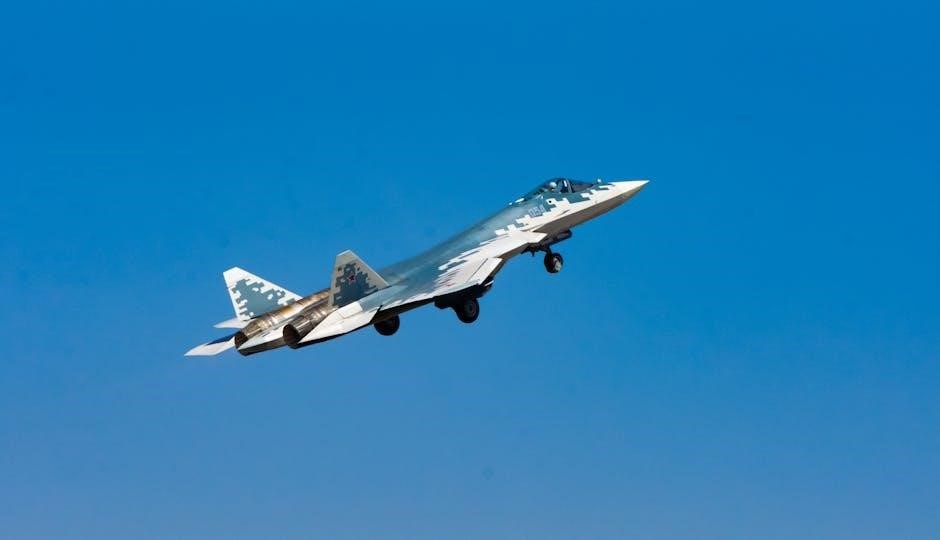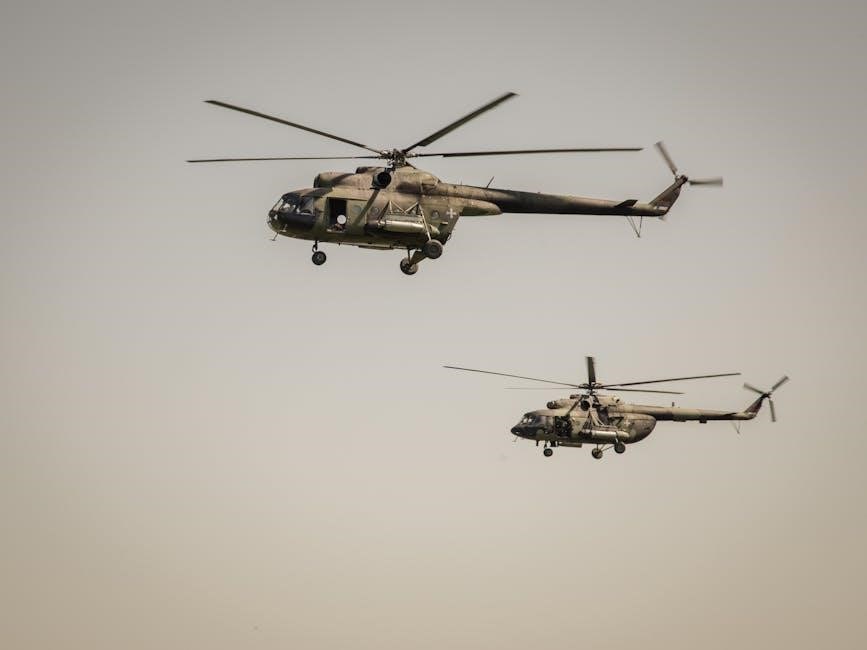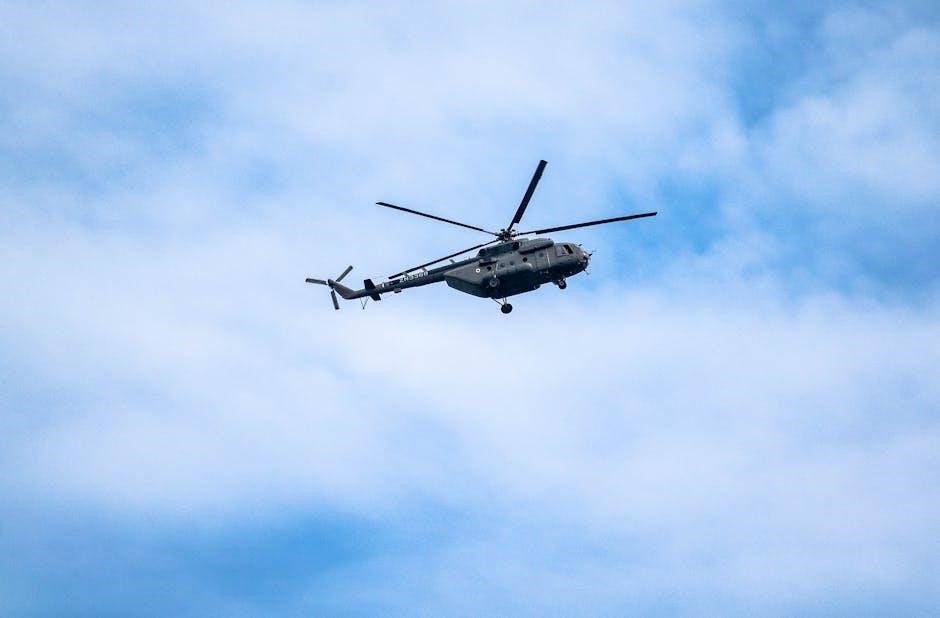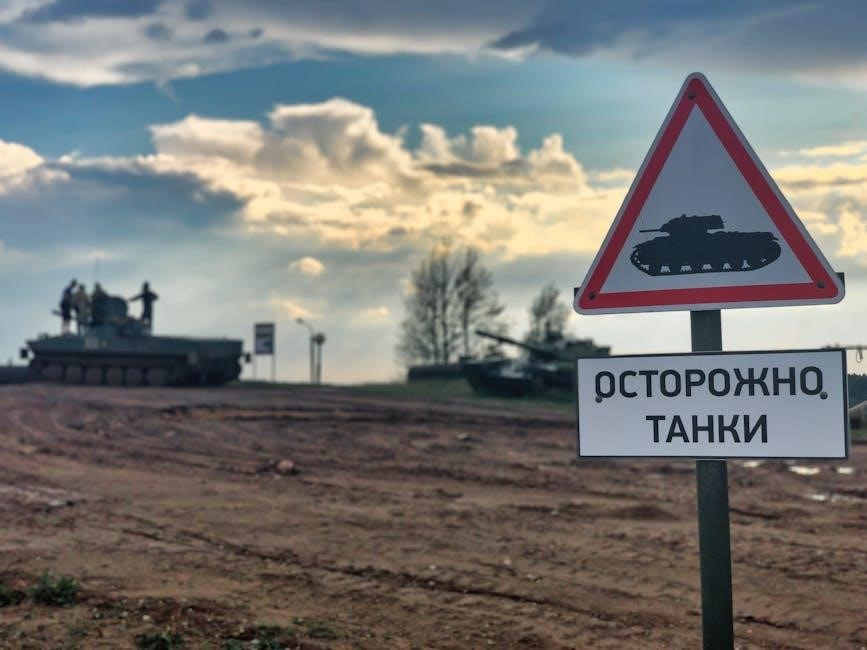In 2024‚ Russian military helicopters continue to play a pivotal role in modern warfare‚ showcasing advanced designs and capabilities. With Mil and Kamov leading production‚ these aircraft remain central to Russia’s defense strategy‚ combining stealth‚ AI‚ and multirole functionalities‚ ensuring their relevance in ongoing and future conflicts.
1.1 Overview of the Russian Military Helicopter Industry
The Russian military helicopter industry remains a cornerstone of national defense‚ with Mil and Kamov as its backbone. In 2024‚ the sector has showcased advancements in design‚ production‚ and technology‚ driven by the demand for versatile and resilient aircraft. The development of hybrid helicopters like the NV.17 highlights innovation‚ while increased production rates reflect strategic priorities. Despite sanctions‚ the industry has demonstrated adaptability‚ ensuring the delivery of modernized platforms to meet operational needs. This resilience underscores Russia’s commitment to maintaining a competitive edge in military aviation.
Modern Russian Military Helicopter Platforms
Russia’s 2024 military helicopter fleet features advanced platforms like the Mi-28NM and Ka-52M‚ known for their superior combat capabilities and versatility. These helicopters integrate cutting-edge technologies‚ ensuring dominance in modern warfare scenarios.
2.1 Mi-28NM and Ka-52M: Advanced Attack Helicopters
The Mi-28NM and Ka-52M are Russia’s premier attack helicopters‚ featuring enhanced firepower‚ maneuverability‚ and advanced avionics. Both models have undergone significant upgrades‚ including improved missile systems and armor protection‚ making them highly effective in combat scenarios. The Mi-28NM‚ an upgraded version of the Mi-28N Night Hunter‚ boasts increased precision and operational range‚ while the Ka-52M‚ known for its coaxial rotor design‚ offers unparalleled agility and combat versatility. These helicopters are integral to Russia’s modern military strategy‚ ensuring superior capabilities in both day and night operations.
2.2 Development and Capabilities of the NV.17 Hybrid Helicopter
The NV.17 hybrid helicopter‚ developed by HeliBuero‚ represents a significant leap in Russian rotorcraft technology. Designed as a medium-class helicopter‚ it is engineered for versatility‚ capable of performing cargo transport‚ passenger carriage‚ and fire support missions. The NV.17 has advanced to the technical design phase following the completion of its preliminary and draft design stages in 2024. Its hybrid design integrates cutting-edge features‚ making it a potential game-changer for multirole operations. The helicopter’s development underscores Russia’s focus on innovation and adaptability in military aviation‚ ensuring it remains competitive in modern conflict scenarios.

Production and Manufacturing in 2024
Russia’s military helicopter production in 2024 saw significant advancements‚ with increased manufacturing rates and improved efficiency. Key manufacturers‚ Mil and Kamov‚ played pivotal roles in delivering advanced rotorcraft.
3.1 Recent Advancements in Russian Military Helicopter Production
In 2024‚ Russian military helicopter production achieved notable milestones‚ driven by enhanced manufacturing techniques and streamlined processes. The integration of cutting-edge technologies‚ such as advanced composites and improved avionics‚ significantly boosted performance and durability. Key manufacturers like Mil and Kamov prioritized modernization‚ ensuring the delivery of high-quality rotorcraft tailored to meet evolving combat demands. Additionally‚ the implementation of three-shift operations and overtime work allowed for increased production volumes‚ enabling the Russian military to maintain operational readiness and capabilities in various theaters of operation.

3.2 Role of Key Manufacturers: Mil and Kamov
Mil and Kamov remain indispensable to Russia’s military helicopter industry in 2024. Mil Moscow Helicopter Plant focuses on heavy-lift and attack helicopters like the Mi-28NM‚ while Kamov excels in coaxial rotor designs‚ such as the Ka-52M. Both manufacturers have adapted to sanctions by enhancing domestic supply chains and innovating production processes. Their expertise ensures the delivery of cutting-edge rotorcraft‚ crucial for maintaining Russia’s air superiority and operational readiness in modern conflicts. Their collaboration with the Russian military underscores their pivotal role in national defense and strategic capabilities.

Technological Innovations
Russia’s military helicopters in 2024 feature advanced AI integration‚ modern avionics‚ and stealth capabilities‚ enhancing combat efficiency and surveillance. These innovations mark a leap in rotorcraft technology for modern warfare.
4.1 Integration of AI and Modern Avionics
Russian military helicopters in 2024 have seen significant advancements in AI integration and modern avionics‚ enhancing operational efficiency. AI-driven systems enable real-time data processing‚ improved targeting accuracy‚ and autonomous decision-making capabilities. Modern avionics systems‚ including advanced navigation and communication tools‚ ensure seamless connectivity and enhanced situational awareness. These technologies are particularly evident in platforms like the NV.17 hybrid helicopter‚ which showcases multirole capabilities. The integration of AI and avionics not only boosts combat effectiveness but also ensures adaptability to evolving battlefield scenarios‚ making Russian helicopters highly competitive in modern warfare.
4.2 Stealth Technology and Surveillance Capabilities
Russian military helicopters in 2024 have incorporated advanced stealth technology to reduce radar and infrared signatures‚ enhancing survivability in hostile environments. Modernized platforms feature streamlined designs and radar-absorbent materials to evade detection. Surveillance capabilities have also been upgraded‚ with high-resolution sensors and reconnaissance systems enabling real-time intelligence gathering. These technologies allow Russian helicopters to conduct covert missions and gather critical battlefield data‚ significantly improving their operational effectiveness in modern combat scenarios.
Strategic Deployment and Roles
Russian military helicopters in 2024 are strategically deployed across conflict zones‚ showcasing their multirole capabilities in transport‚ combat‚ and reconnaissance missions‚ enhancing operational versatility and effectiveness.
5.1 Helicopter Deployments in Ongoing Conflicts
Russian military helicopters‚ such as the Mi-28NM and Ka-52M‚ have been actively deployed in ongoing conflicts‚ demonstrating their combat and reconnaissance capabilities. These rotorcraft provide critical ground support‚ ensuring tactical superiority in contested zones; Their versatility in urban and challenging terrains has proven vital for mission success. Despite challenges like maintenance and sanctions‚ their strategic deployment remains central to Russia’s military operations‚ underscoring their importance in modern warfare scenarios.

5.2 Multirole Capabilities: Transport‚ Combat‚ and Reconnaissance
Russian military helicopters in 2024 excel in multirole operations‚ seamlessly transitioning between transport‚ combat‚ and reconnaissance missions. Advanced models like the Mi-28NM and Ka-52M are equipped with cutting-edge avionics‚ enabling precision strikes and real-time surveillance. The NV.17 hybrid helicopter further enhances these capabilities‚ offering versatile transport and combat functionalities. These aircraft are integral to modern military operations‚ providing adaptability and operational efficiency in diverse combat scenarios‚ making them indispensable assets for the Russian armed forces in 2024 and beyond.

Challenges and Limitations
Russian military helicopters face challenges like sanctions disrupting production‚ supply chain issues‚ and maintenance difficulties. These factors hinder modernization and operational efficiency‚ impacting readiness and deployment capabilities.
6.1 Impact of Sanctions on Helicopter Production
Sanctions have significantly impacted Russia’s helicopter production by disrupting supply chains and limiting access to critical components. Export-import restrictions and financial sanctions have led to shortages of advanced avionics and foreign-made parts. Russian manufacturers‚ such as Mil and Kamov‚ face challenges in sourcing materials‚ delaying production timelines. Additionally‚ sanctions have constrained funding‚ forcing budget reallocations and prioritization of essential programs. While Russia aims to mitigate these effects through import substitution and increased state support‚ the constraints continue to affect production efficiency and innovation‚ potentially hindering the modernization of its military helicopter fleet.

6.2 Supply Chain and Maintenance Challenges
Russia’s military helicopter sector faces significant supply chain disruptions due to sanctions‚ affecting the availability of critical components. The reliance on imported parts has led to delays in production and maintenance. Additionally‚ the industry struggles with domesticizing production for advanced materials and technologies. Maintenance challenges are compounded by limited access to spare parts‚ resulting in extended downtime for aircraft. These issues have prompted Russia to accelerate efforts in localizing production‚ though progress remains slow. The strain on supply chains and maintenance capabilities poses long-term risks to the readiness and operational effectiveness of Russian military helicopters.

Future Outlook and Modernization Plans
Russia’s future outlook includes expanding its military helicopter fleet‚ advancing AI integration‚ and developing stealth capabilities‚ ensuring modernization aligns with strategic defense needs.
7.1 Upcoming Projects and Innovations in 2024 and Beyond
Russia is advancing several cutting-edge projects‚ including the NV.17 hybrid helicopter‚ designed for multirole operations. This medium-class aircraft combines versatility in cargo transport‚ passenger carriage‚ and fire support. Additionally‚ the integration of AI and modern avionics is expected to enhance operational efficiency and decision-making. Stealth technology is also being prioritized to reduce detection risks. These innovations underscore Russia’s commitment to maintaining its competitive edge in military aviation. Key manufacturers like Mil and Kamov are spearheading these developments‚ ensuring the Russian military remains equipped with state-of-the-art helicopters for future challenges.
7.2 Expansion of Helicopter Fleets for the Russian Military
The Russian military is expanding its helicopter fleets to enhance operational capabilities. In 2024‚ production rates for advanced models like the NV.17 hybrid helicopter have increased‚ with deliveries expected to rise. This expansion aims to modernize the fleet‚ ensuring readiness for diverse missions. Key manufacturers‚ such as Mil and Kamov‚ are central to this effort‚ focusing on multirole helicopters that can perform transport‚ combat‚ and reconnaissance tasks. The fleet growth underscores Russia’s commitment to maintaining a robust air presence‚ aligning with its strategic defense priorities and addressing ongoing operational demands.
